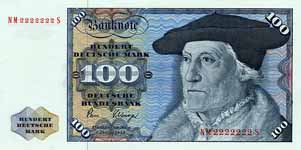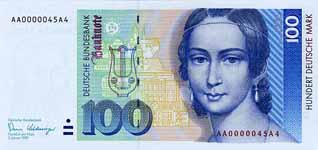.


National Anthem of Germany
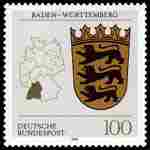
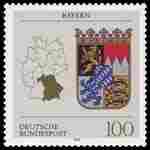
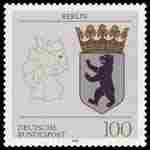
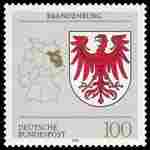
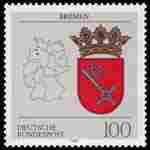
Baden-Württemberg, Bayern, Berlin, Brandenburg, Bremen,
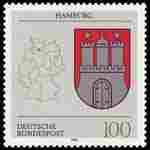
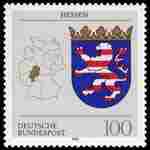
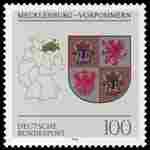
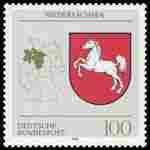
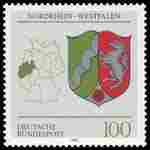
Hamburg, Hessen, Mecklenburg-Vorpommern, Niedersachsen, Wappen Nordrhein-Westfalen,
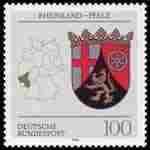
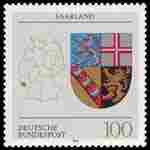
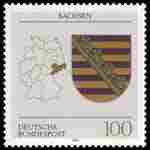
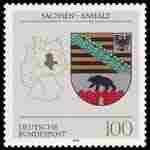
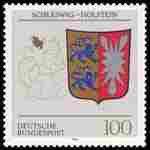
Rheinland-Pfalz, Saarland, Sachsen, Sachsen-Anhalt, Schleswig-Holstein
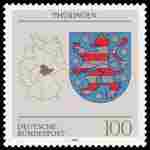
Aachen : Images,
Augsburg : Images,
Bad Cannstatt : Images,
Bad Kissingen : Images
Bad Wildbad : Images
Bamberg : Images
Bayreuth : Images
Berchtesgaden : Images
Berlin : Images
Bielefeld : Images
Bochum : Images
Bonn : Images
Brandenburg an der Havel : Images
Braunschweig : Images
Bremen : Images
Cologne : Images
Darmstadt : Images
Dortmund : Images
Dresden : Images
Duisburg : Images
Düsseldorf : Images
Eberswalde : Images
Einbeck : Images
Eisenach : Images
Eisleben : Images
Emden : Images
Emmerich am Rhein : Images
Erfurt : Images
Essen : Images
Esslingen am Neckar : Images
Eutin : Images
Flensburg : Images
Forst (Lausitz)
Frankfurt am Main : Images
Frankfurt an der Oder : Images
Frankfurt an der Oder
Freiburg im Breisgau : Images
Freising : Images
Friedrichshafen : Images
Fulda : Images
Gelsenkirchen : Images
Gera : Images
Gerolstein : Images
Gießen : Images
Glücksburg : Images
Görlitz : Images
Goslar : Images
Gotha : Images
Göttingen : Images
Greifswald : Images
Gütersloh : Images
Hagen : Images
Halberstadt : Images
Halle : Images
Hamburg: Images
Heidelberg : Images
Hildesheim : Images
Jena : Images
Jüterbog
Kaiserslautern : Images
Karlsruhe : Images
Kassel : Images
Kiel : Images
Koblenz : Images
Leipzig : Images
Lindau : Images
Linderhof Palace : Images
Mainz : Images
Mannheim : Images
München : Images
Neumünster : Images
Neuschwanstein Castle : Images
Neustrelitz : Images
Nideggen : Images
Norderney
Nordhausen : Images
Nürnberg : Images, The Story of Nuremberg, Cecil Headlam
Oberammergau : Images
Obernkirchen
Offenbach am Main
Oldenburg : Images
Oranienburg
Osnabrück : Images
Pforzheim : Images
Regensburg : Images
Rostock : Images
Sangerhausen
Schleswig : Images
Schmalkalden
Schwerin : Images
Stadt Wehlen : Images
Stuttgart : Images
Tegernsee
Torgau
Trier : Images
Tübingen : Images
Ulm : Images
Vacha : Images
Warnemünde
Wasungen : Images
Wefensleben : Images
Weida : Images
Weimar : Images
Wiesbaden : Images
Wilhelmshaven : Images
Wismar : Images
Wittenberg : Images
Wolgast : Images
Worms : Images
Wuppertal : Images
Würzburg : Images
Wurzen : Images
Wyk auf Föhr : Images
Zerbst : Images
Zeulenroda : Images
Zinnowitz : Images
Zittau : Images
Zossen : Images
Zschopau : Images
Zweibrücken : Images
Zwickau : Images
Zwingenberg : Images
History
Bismarck and the Foundation of the German Empire, James Wycliffe Headlam
War against Germany, Kenneth Hunter
Legends of the Rhine, Wilhelm Ruland
Deutsche Charaktere und Begebenheiten, Jakob Wassermann
German Stamps : 1951, 1952 , 1953 , 1959, 1960, 1961, 1964, 1965 , 1966 , 1967 , 1968 , 1970 , 1971 , 1972 , 1973 , 1974, 1975, 1982, 1990, 1992, 1993 , 1994, 1996, 1999, 2009,
Art
ENGLISH
Expressionism: a revolution in German art, Dietmar Elger
Caspar David Friedrich and the age of German Romanticism, Linda Siegel
Objects as History in Twentieth-Century German Art: Beckmann to Beuys, Peter Chametzky
Art and the German bourgeoisie: Alfred Lichtwark and modern painting in Hamburg, Carolyn Helen Kay
Artists and society in Germany, 1850-1914, Robin Lenman
The making of Paul Klee's career, 1914-1920, Otto Karl Werckmeister
German Expressionism: The Graphic Impulse, Starr Figura, Peter Jelavich, Heather Hess
Marcel Duchamp and Max Ernst: the bride shared, David Hopkins
German post-expressionism: the art of the great disorder, 1918-1924, Dennis Crockett
New objectivity: painting, graphic art and photography in Weimar Germany , Sergiusz Michalski
Neue Sachlichkeit 1918-33: unity and diversity of an art movement, Steve Plumb
Max Ernst and alchemy: a magician in search of myth, M. E. Warlick
Art As Politics in the Third Reich, Jonathan Petropoulos
--------
Modern art at the Pinakothek der Moderne Munich, Cathrin Klingsöhr-Leroy
Germany (Europe)
Introduction :: Germany
Background: This entry usually highlights major historic events and current issues and may include a statement about one or two key future trends. Background field listing
As Europe's largest economy and second most populous nation (after Russia), Germany is a key member of the continent's economic, political, and defense organizations. European power struggles immersed Germany in two devastating world wars in the first half of the 20th century and left the country occupied by the victorious Allied powers of the US, UK, France, and the Soviet Union in 1945. With the advent of the Cold War, two German states were formed in 1949: the western Federal Republic of Germany (FRG) and the eastern German Democratic Republic (GDR). The democratic FRG embedded itself in key western economic and security organizations, the EC (now the EU) and NATO, while the communist GDR was on the front line of the Soviet-led Warsaw Pact. The decline of the USSR and the end of the Cold War allowed for German reunification in 1990. Since then, Germany has expended considerable funds to bring eastern productivity and wages up to western standards. In January 1999, Germany and 10 other EU countries introduced a common European exchange currency, the euro.
Geography :: Germany
Location: This entry identifies the country's regional location, neighboring countries, and adjacent bodies of water. Location field listing
Central Europe, bordering the Baltic Sea and the North Sea, between the Netherlands and Poland, south of Denmark
Geographic coordinates: This entry includes rounded latitude and longitude figures for the centroid or center point of a country expressed in degrees and minutes; it is based on the locations provided in the Geographic Names Server (GNS), maintained by the National Geospatial-Intelligence Agency on behalf of the US Board on Geographic Names. Geographic coordinates field listing
51 00 N, 9 00 E
Map references: This entry includes the name of the Factbook reference map on which a country may be found. Note that boundary representations on these maps are not necessarily authoritative. The entry on Geographic coordinates may be helpful in finding some smaller countries. Map references field listing
Europe
Area: This entry includes three subfields. Total area is the sum of all land and water areas delimited by international boundaries and/or coastlines. Land area is the aggregate of all surfaces delimited by international boundaries and/or coastlines, excluding inland water bodies (lakes, reservoirs, rivers). Water area is the sum of the surfaces of all inland water bodies, such as lakes, reservoirs, or rivers, as delimited by international boundaries and/or coastlines. Area field listing
total: 357,022 sq km
land: 348,672 sq km
water: 8,350 sq km
country comparison to the world: 64
Area - comparative: This entry provides an area comparison based on total area equivalents. Most entities are compared with the entire US or one of the 50 states based on area measurements (1990 revised) provided by the US Bureau of the Census. The smaller entities are compared with Washington, DC (178 sq km, 69 sq mi) or The Mall in Washington, DC (0.59 sq km, 0.23 sq mi, 146 acres). Area - comparative field listing
three times the size of Pennsylvania; slightly smaller than Montana
Area comparison map: Area comparison map
Land boundaries: This entry contains the total length of all land boundaries and the individual lengths for each of the contiguous border countries. When available, official lengths published by national statistical agencies are used. Because surveying methods may differ, country border lengths reported by contiguous countries may differ. Land boundaries field listing
total: 3,714 km
border countries (9): Austria 801 km, Belgium 133 km, Czech Republic 704 km, Denmark 140 km, France 418 km, Luxembourg 128 km, Netherlands 575 km, Poland 467 km, Switzerland 348 km
Coastline: This entry gives the total length of the boundary between the land area (including islands) and the sea. Coastline field listing
2,389 km
Maritime claims: This entry includes the following claims, the definitions of which are excerpted from the United Nations Convention on the Law of the Sea (UNCLOS), which alone contains the full and definitive descriptions: territorial sea - the sovereignty of a coastal state extends beyond its land territory and internal waters to an adjacent belt of sea, described as the territorial sea in the UNCLOS (Part II); this sovereignty extends to the air space over the territorial sea as well as its underlying s . . . more Maritime claims field listing
territorial sea: 12 nm
exclusive economic zone: 200 nm
continental shelf: 200-m depth or to the depth of exploitation
Climate: This entry includes a brief description of typical weather regimes throughout the year; in the Word entry only, it includes four subfields that describe climate extremes:ten driest places on earth (average annual precipitation) describes the annual average precipitation measured in both millimeters and inches for selected countries with climate extremes. ten wettest places on earth (average annual precipitation) describes the annual average precipitation measured in both millimeters and i . . . more Climate field listing
temperate and marine; cool, cloudy, wet winters and summers; occasional warm mountain (foehn) wind
Terrain: This entry contains a brief description of the topography. Terrain field listing
lowlands in north, uplands in center, Bavarian Alps in south
Elevation: This entry includes the mean elevation and elevation extremes, lowest point and highest point. Elevation field listing
mean elevation: 263 m
lowest point: Neuendorf bei Wilster -3.5 m
highest point: Zugspitze 2,963 m
Natural resources: This entry lists a country's mineral, petroleum, hydropower, and other resources of commercial importance, such as rare earth elements (REEs). In general, products appear only if they make a significant contribution to the economy, or are likely to do so in the future. Natural resources field listing
coal, lignite, natural gas, iron ore, copper, nickel, uranium, potash, salt, construction materials, timber, arable land
Land use: This entry contains the percentage shares of total land area for three different types of land use: agricultural land, forest, and other; agricultural land is further divided into arable land - land cultivated for crops like wheat, maize, and rice that are replanted after each harvest, permanent crops - land cultivated for crops like citrus, coffee, and rubber that are not replanted after each harvest, and includes land under flowering shrubs, fruit trees, nut trees, and vines, and permane . . . more Land use field listing
agricultural land: 48% (2011 est.)
arable land: 34.1% (2011 est.) / permanent crops: 0.6% (2011 est.) / permanent pasture: 13.3% (2011 est.)
forest: 31.8% (2011 est.)
other: 20.2% (2011 est.)
Irrigated land: This entry gives the number of square kilometers of land area that is artificially supplied with water. Irrigated land field listing
6,500 sq km (2012)
Population distribution: This entry provides a summary description of the population dispersion within a country. While it may suggest population density, it does not provide density figures. Population distribution field listing
most populous country in Europe; a fairly even distribution throughout most of the country, with urban areas attracting larger and denser populations, particularly in the far western part of the industrial state of North Rhine-Westphalia
Natural hazards: This entry lists potential natural disasters. For countries where volcanic activity is common, a volcanism subfield highlights historically active volcanoes. Natural hazards field listing
flooding
Environment - current issues: This entry lists the most pressing and important environmental problems. The following terms and abbreviations are used throughout the entry: Acidification - the lowering of soil and water pH due to acid precipitation and deposition usually through precipitation; this process disrupts ecosystem nutrient flows and may kill freshwater fish and plants dependent on more neutral or alkaline conditions (see acid rain). Acid rain - characterized as containing harmful levels of sulfur dioxi . . . more Environment - current issues field listing
emissions from coal-burning utilities and industries contribute to air pollution; acid rain, resulting from sulfur dioxide emissions, is damaging forests; pollution in the Baltic Sea from raw sewage and industrial effluents from rivers in eastern Germany; hazardous waste disposal; government established a mechanism for ending the use of nuclear power by 2022; government working to meet EU commitment to identify nature preservation areas in line with the EU's Flora, Fauna, and Habitat directive
Environment - international agreements: This entry separates country participation in international environmental agreements into two levels - party to and signed, but not ratified. Agreements are listed in alphabetical order by the abbreviated form of the full name. Environment - international agreements field listing
party to: Air Pollution, Air Pollution-Nitrogen Oxides, Air Pollution-Persistent Organic Pollutants, Air Pollution-Sulfur 85, Air Pollution-Sulfur 94, Air Pollution-Volatile Organic Compounds, Antarctic-Environmental Protocol, Antarctic-Marine Living Resources, Antarctic Seals, Antarctic Treaty, Biodiversity, Climate Change, Climate Change-Kyoto Protocol, Desertification, Endangered Species, Environmental Modification, Hazardous Wastes, Law of the Sea, Marine Dumping, Ozone Layer Protection, Ship Pollution, Tropical Timber 83, Tropical Timber 94, Wetlands, Whaling
signed, but not ratified: none of the selected agreements
Geography - note: This entry includes miscellaneous geographic information of significance not included elsewhere. Geography - note field listing
strategic location on North European Plain and along the entrance to the Baltic Sea; most major rivers in Germany - the Rhine, Weser, Oder, Elbe - flow northward; the Danube, which originates in the Black Forest, flows eastward
People and Society :: Germany
Population: This entry gives an estimate from the US Bureau of the Census based on statistics from population censuses, vital statistics registration systems, or sample surveys pertaining to the recent past and on assumptions about future trends. The total population presents one overall measure of the potential impact of the country on the world and within its region. Note: Starting with the 1993 Factbook, demographic estimates for some countries (mostly African) have explicitly taken into account t . . . more Population field listing
80,159,662 (July 2020 est.)
country comparison to the world: 19
Nationality: This entry provides the identifying terms for citizens - noun and adjective. Nationality field listing
noun: German(s)
adjective: German
Ethnic groups: This entry provides an ordered listing of ethnic groups starting with the largest and normally includes the percent of total population. Ethnic groups field listing
German 87.2%, Turkish 1.8%, Polish 1%, Syrian 1%, other 9% (2017 est.)
note: data represent population by nationality
Languages: This entry provides a listing of languages spoken in each country and specifies any that are official national or regional languages. When data is available, the languages spoken in each country are broken down according to the percent of the total population speaking each language as a first language. For those countries without available data, languages are listed in rank order based on prevalence, starting with the most-spoken language. Languages field listing
German (official)
note: Danish, Frisian, Sorbian, and Romani are official minority languages; Low German, Danish, North Frisian, Sater Frisian, Lower Sorbian, Upper Sorbian, and Romani are recognized as regional languages under the European Charter for Regional or Minority Languages
Religions: This entry is an ordered listing of religions by adherents starting with the largest group and sometimes includes the percent of total population. The core characteristics and beliefs of the world's major religions are described below. Baha'i - Founded by Mirza Husayn-Ali (known as Baha'u'llah) in Iran in 1852, Baha'i faith emphasizes monotheism and believes in one eternal transcendent God. Its guiding focus is to encourage the unity of all peoples on the earth so that justice and peace m . . . more Religions field listing
Roman Catholic 27.7%, Protestant 25.5%, Muslim 5.1%, Orthodox 1.9%, other Christian 1.1%, other .9%, none 37.8% (2018 est.)
Age structure: This entry provides the distribution of the population according to age. Information is included by sex and age group as follows: 0-14 years (children), 15-24 years (early working age), 25-54 years (prime working age), 55-64 years (mature working age), 65 years and over (elderly). The age structure of a population affects a nation's key socioeconomic issues. Countries with young populations (high percentage under age 15) need to invest more in schools, while countries with older population . . . more Age structure field listing
0-14 years: 12.89% (male 5,302,850/female 5,025,863)
15-24 years: 9.81% (male 4,012,412/female 3,854,471)
25-54 years: 38.58% (male 15,553,328/female 15,370,417)
55-64 years: 15.74% (male 6,297,886/female 6,316,024)
65 years and over: 22.99% (male 8,148,873/female 10,277,538) (2020 est.)
population pyramid: population pyramid
Dependency ratios: Dependency ratios are a measure of the age structure of a population. They relate the number of individuals that are likely to be economically "dependent" on the support of others. Dependency ratios contrast the ratio of youths (ages 0-14) and the elderly (ages 65+) to the number of those in the working-age group (ages 15-64). Changes in the dependency ratio provide an indication of potential social support requirements resulting from changes in population age structures. As fertility leve . . . more Dependency ratios field listing
total dependency ratio: 55.4
youth dependency ratio: 21.7
elderly dependency ratio: 33.7
potential support ratio: 3 (2020 est.)
Median age: This entry is the age that divides a population into two numerically equal groups; that is, half the people are younger than this age and half are older. It is a single index that summarizes the age distribution of a population. Currently, the median age ranges from a low of about 15 in Niger and Uganda to 40 or more in several European countries and Japan. See the entry for "Age structure" for the importance of a young versus an older age structure and, by implication, a low versus a high . . . more Median age field listing
total: 47.8 years
male: 46.5 years
female: 49.1 years (2020 est.)
country comparison to the world: 4
Population growth rate: The average annual percent change in the population, resulting from a surplus (or deficit) of births over deaths and the balance of migrants entering and leaving a country. The rate may be positive or negative. The growth rate is a factor in determining how great a burden would be imposed on a country by the changing needs of its people for infrastructure (e.g., schools, hospitals, housing, roads), resources (e.g., food, water, electricity), and jobs. Rapid population growth can be seen as . . . more Population growth rate field listing
-0.19% (2020 est.)
country comparison to the world: 209
Birth rate: This entry gives the average annual number of births during a year per 1,000 persons in the population at midyear; also known as crude birth rate. The birth rate is usually the dominant factor in determining the rate of population growth. It depends on both the level of fertility and the age structure of the population. Birth rate field listing
8.6 births/1,000 population (2020 est.)
country comparison to the world: 215
Death rate: This entry gives the average annual number of deaths during a year per 1,000 population at midyear; also known as crude death rate. The death rate, while only a rough indicator of the mortality situation in a country, accurately indicates the current mortality impact on population growth. This indicator is significantly affected by age distribution, and most countries will eventually show a rise in the overall death rate, in spite of continued decline in mortality at all ages, as declining . . . more Death rate field listing
12.1 deaths/1,000 population (2020 est.)
country comparison to the world: 16
Net migration rate: This entry includes the figure for the difference between the number of persons entering and leaving a country during the year per 1,000 persons (based on midyear population). An excess of persons entering the country is referred to as net immigration (e.g., 3.56 migrants/1,000 population); an excess of persons leaving the country as net emigration (e.g., -9.26 migrants/1,000 population). The net migration rate indicates the contribution of migration to the overall level of population chan . . . more Net migration rate field listing
1.5 migrant(s)/1,000 population (2020 est.)
country comparison to the world: 54
Population distribution: This entry provides a summary description of the population dispersion within a country. While it may suggest population density, it does not provide density figures. Population distribution field listing
most populous country in Europe; a fairly even distribution throughout most of the country, with urban areas attracting larger and denser populations, particularly in the far western part of the industrial state of North Rhine-Westphalia
Urbanization: This entry provides two measures of the degree of urbanization of a population. The first, urban population, describes the percentage of the total population living in urban areas, as defined by the country. The second, rate of urbanization, describes the projected average rate of change of the size of the urban population over the given period of time. It is possible for a country with a 100% urban population to still display a change in the rate of urbanization (up or down). For example . . . more Urbanization field listing
urban population: 77.5% of total population (2020)
rate of urbanization: 0.27% annual rate of change (2015-20 est.)
Major urban areas - population: This entry provides the population of the capital and up to six major cities defined as urban agglomerations with populations of at least 750,000 people. An urban agglomeration is defined as comprising the city or town proper and also the suburban fringe or thickly settled territory lying outside of, but adjacent to, the boundaries of the city. For smaller countries, lacking urban centers of 750,000 or more, only the population of the capital is presented. Major urban areas - population field listing
3.562 million BERLIN (capital), 1.790 million Hamburg, 1.538 million Munich, 1.119 million Cologne (2020)
Sex ratio: This entry includes the number of males for each female in five age groups - at birth, under 15 years, 15-64 years, 65 years and over, and for the total population. Sex ratio at birth has recently emerged as an indicator of certain kinds of sex discrimination in some countries. For instance, high sex ratios at birth in some Asian countries are now attributed to sex-selective abortion and infanticide due to a strong preference for sons. This will affect future marriage patterns and fertilit . . . more Sex ratio field listing
at birth: 1.05 male(s)/female
0-14 years: 1.06 male(s)/female
15-24 years: 1.04 male(s)/female
25-54 years: 1.01 male(s)/female
55-64 years: 1 male(s)/female
65 years and over: 0.79 male(s)/female
total population: 0.96 male(s)/female (2020 est.)
Mother's mean age at first birth: This entry provides the mean (average) age of mothers at the birth of their first child. It is a useful indicator for gauging the success of family planning programs aiming to reduce maternal mortality, increase contraceptive use – particularly among married and unmarried adolescents – delay age at first marriage, and improve the health of newborns. Mother's mean age at first birth field listing
29.4 years (2015 est.)
Maternal mortality rate: The maternal mortality rate (MMR) is the annual number of female deaths per 100,000 live births from any cause related to or aggravated by pregnancy or its management (excluding accidental or incidental causes). The MMR includes deaths during pregnancy, childbirth, or within 42 days of termination of pregnancy, irrespective of the duration and site of the pregnancy, for a specified year. Maternal mortality rate field listing
7 deaths/100,000 live births (2017 est.)
country comparison to the world: 154
Infant mortality rate: This entry gives the number of deaths of infants under one year old in a given year per 1,000 live births in the same year. This rate is often used as an indicator of the level of health in a country. Infant mortality rate field listing
total: 3.3 deaths/1,000 live births
male: 3.6 deaths/1,000 live births
female: 3 deaths/1,000 live births (2020 est.)
country comparison to the world: 206
Life expectancy at birth: This entry contains the average number of years to be lived by a group of people born in the same year, if mortality at each age remains constant in the future. Life expectancy at birth is also a measure of overall quality of life in a country and summarizes the mortality at all ages. It can also be thought of as indicating the potential return on investment in human capital and is necessary for the calculation of various actuarial measures. Life expectancy at birth field listing
total population: 81.1 years
male: 78.7 years
female: 83.6 years (2020 est.)
country comparison to the world: 37
Total fertility rate: This entry gives a figure for the average number of children that would be born per woman if all women lived to the end of their childbearing years and bore children according to a given fertility rate at each age. The total fertility rate (TFR) is a more direct measure of the level of fertility than the crude birth rate, since it refers to births per woman. This indicator shows the potential for population change in the country. A rate of two children per woman is considered the replaceme . . . more Total fertility rate field listing
1.47 children born/woman (2020 est.)
country comparison to the world: 208
Contraceptive prevalence rate: This field gives the percent of women of reproductive age (15-49) who are married or in union and are using, or whose sexual partner is using, a method of contraception according to the date of the most recent available data. The contraceptive prevalence rate is an indicator of health services, development, and women’s empowerment. It is also useful in understanding, past, present, and future fertility trends, especially in developing countries. Contraceptive prevalence rate field listing
80.3% (2011)
note: percent of women aged 18-49
Drinking water source: This entry provides information about access to improved or unimproved drinking water sources available to segments of the population of a country. Improved drinking water - use of any of the following sources: piped water into dwelling, yard, or plot; public tap or standpipe; tubewell or borehole; protected dug well; protected spring; or rainwater collection. Unimproved drinking water - use of any of the following sources: unprotected dug well; unprotected spring; cart with small tank or . . . more Drinking water source field listing
improved: urban: 100% of population
rural: 100% of population
total: 100% of population
unimproved: urban: 0% of population
rural: 0% of population
total: 0% of population (2015 est.)
Current Health Expenditure: Current Health Expenditure (CHE) describes the share of spending on health in each country relative to the size of its economy. It includes expenditures corresponding to the final consumption of health care goods and services and excludes investment, exports, and intermediate consumption. CHE shows the importance of the health sector in the economy and indicates the priority given to health in monetary terms. Note: Current Health Expenditure replaces the former Health Expenditures field . . . more Current Health Expenditure field listing
11.1% (2016)
Physicians density: This entry gives the number of medical doctors (physicians), including generalist and specialist medical practitioners, per 1,000 of the population. Medical doctors are defined as doctors that study, diagnose, treat, and prevent illness, disease, injury, and other physical and mental impairments in humans through the application of modern medicine. They also plan, supervise, and evaluate care and treatment plans by other health care providers. The World Health Organization estimates that f . . . more Physicians density field listing
4.21 physicians/1,000 population (2016)
Hospital bed density: This entry provides the number of hospital beds per 1,000 people; it serves as a general measure of inpatient service availability. Hospital beds include inpatient beds available in public, private, general, and specialized hospitals and rehabilitation centers. In most cases, beds for both acute and chronic care are included. Because the level of inpatient services required for individual countries depends on several factors - such as demographic issues and the burden of disease - there is . . . more Hospital bed density field listing
8.3 beds/1,000 population (2013)
Sanitation facility access: This entry provides information about access to improved or unimproved sanitation facilities available to segments of the population of a country. Improved sanitation - use of any of the following facilities: flush or pour-flush to a piped sewer system, septic tank or pit latrine; ventilated improved pit (VIP) latrine; pit latrine with slab; or a composting toilet. Unimproved sanitation - use of any of the following facilities: flush or pour-flush not piped to a sewer system, septic tank . . . more Sanitation facility access field listing
improved: urban: 99.3% of population (2015 est.)
rural: 99% of population (2015 est.)
total: 99.2% of population (2015 est.)
unimproved: urban: 0.7% of population (2015 est.)
rural: 1% of population (2015 est.)
total: 0.8% of population (2015 est.)
HIV/AIDS - adult prevalence rate: This entry gives an estimate of the percentage of adults (aged 15-49) living with HIV/AIDS. The adult prevalence rate is calculated by dividing the estimated number of adults living with HIV/AIDS at yearend by the total adult population at yearend. HIV/AIDS - adult prevalence rate field listing
0.1% (2018 est.)
country comparison to the world: 123
HIV/AIDS - people living with HIV/AIDS: This entry gives an estimate of all people (adults and children) alive at yearend with HIV infection, whether or not they have developed symptoms of AIDS. HIV/AIDS - people living with HIV/AIDS field listing
87,000 (2018 est.)
country comparison to the world: 46
HIV/AIDS - deaths: This entry gives an estimate of the number of adults and children who died of AIDS during a given calendar year. HIV/AIDS - deaths field listing
<500 (2018 est.)
Obesity - adult prevalence rate: This entry gives the percent of a country's population considered to be obese. Obesity is defined as an adult having a Body Mass Index (BMI) greater to or equal to 30.0. BMI is calculated by taking a person's weight in kg and dividing it by the person's squared height in meters. Obesity - adult prevalence rate field listing
22.3% (2016)
country comparison to the world: 79
Education expenditures: This entry provides the public expenditure on education as a percent of GDP. Education expenditures field listing
4.8% of GDP (2016)
country comparison to the world: 72
School life expectancy (primary to tertiary education): School life expectancy (SLE) is the total number of years of schooling (primary to tertiary) that a child can expect to receive, assuming that the probability of his or her being enrolled in school at any particular future age is equal to the current enrollment ratio at that age. Caution must be maintained when utilizing this indicator in international comparisons. For example, a year or grade completed in one country is not necessarily the same in terms of educational content or qualit . . . more School life expectancy (primary to tertiary education) field listing
total: 17 years
male: 17 years
female: 17 years (2016)
Unemployment, youth ages 15-24: This entry gives the percent of the total labor force ages 15-24 unemployed during a specified year. Unemployment, youth ages 15-24 field listing
total: 6.2%
male: 7.1%
female: 5.1% (2018 est.)
country comparison to the world: 158
Hide
Government :: Germany
Panel - Expanded
Country name: This entry includes all forms of the country's name approved by the US Board on Geographic Names (Italy is used as an example): conventional long form (Italian Republic), conventional short form (Italy), local long form (Repubblica Italiana), local short form (Italia), former (Kingdom of Italy), as well as the abbreviation. Also see the Terminology note. Country name field listing
conventional long form: Federal Republic of Germany
conventional short form: Germany
local long form: Bundesrepublik Deutschland
local short form: Deutschland
former: German Reich
etymology: the Gauls (Celts) of Western Europe may have referred to the newly arriving Germanic tribes who settled in neighboring areas east of the Rhine during the first centuries B.C. as "Germani," a term the Romans adopted as "Germania"; the native designation "Deutsch" comes from the Old High German "diutisc" meaning "of the people"
Government type: This entry gives the basic form of government. Definitions of the major governmental terms are as follows. (Note that for some countries more than one definition applies.): Absolute monarchy - a form of government where the monarch rules unhindered, i.e., without any laws, constitution, or legally organized opposition. Anarchy - a condition of lawlessness or political disorder brought about by the absence of governmental authority. Authoritarian - a form of government in whic . . . more Government type field listing
federal parliamentary republic
Capital: This entry gives the name of the seat of government, its geographic coordinates, the time difference relative to Coordinated Universal Time (UTC) and the time observed in Washington, DC, and, if applicable, information on daylight saving time (DST). Where appropriate, a special note has been added to highlight those countries that have multiple time zones. Capital field listing
name: Berlin
geographic coordinates: 52 31 N, 13 24 E
time difference: UTC+1 (6 hours ahead of Washington, DC, during Standard Time)
daylight saving time: +1hr, begins last Sunday in March; ends last Sunday in October
etymology: the origin of the name is unclear but may be related to the old West Slavic (Polabian) word "berl" or "birl," meaning "swamp"
Administrative divisions: This entry generally gives the numbers, designatory terms, and first-order administrative divisions as approved by the US Board on Geographic Names (BGN). Changes that have been reported but not yet acted on by the BGN are noted. Geographic names conform to spellings approved by the BGN with the exception of the omission of diacritical marks and special characters. Administrative divisions field listing
16 states (Laender, singular - Land); Baden-Wuerttemberg, Bayern (Bavaria), Berlin, Brandenburg, Bremen, Hamburg, Hessen (Hesse), Mecklenburg-Vorpommern (Mecklenburg-Western Pomerania), Niedersachsen (Lower Saxony), Nordrhein-Westfalen (North Rhine-Westphalia), Rheinland-Pfalz (Rhineland-Palatinate), Saarland, Sachsen (Saxony), Sachsen-Anhalt (Saxony-Anhalt), Schleswig-Holstein, Thueringen (Thuringia); note - Bayern, Sachsen, and Thueringen refer to themselves as free states (Freistaaten, singular - Freistaat), while Bremen calls itself a Free Hanseatic City (Freie Hansestadt) and Hamburg considers itself a Free and Hanseatic City (Freie und Hansestadt)
Independence: For most countries, this entry gives the date that sovereignty was achieved and from which nation, empire, or trusteeship. For the other countries, the date given may not represent "independence" in the strict sense, but rather some significant nationhood event such as the traditional founding date or the date of unification, federation, confederation, establishment, fundamental change in the form of government, or state succession. For a number of countries, the establishment of statehood . . . more Independence field listing
18 January 1871 (establishment of the German Empire); divided into four zones of occupation (UK, US, USSR, and France) in 1945 following World War II; Federal Republic of Germany (FRG or West Germany) proclaimed on 23 May 1949 and included the former UK, US, and French zones; German Democratic Republic (GDR or East Germany) proclaimed on 7 October 1949 and included the former USSR zone; West Germany and East Germany unified on 3 October 1990; all four powers formally relinquished rights on 15 March 1991; notable earlier dates: 10 August 843 (Eastern Francia established from the division of the Carolingian Empire); 2 February 962 (crowning of OTTO I, recognized as the first Holy Roman Emperor)
National holiday: This entry gives the primary national day of celebration - usually independence day. National holiday field listing
German Unity Day, 3 October (1990)
Constitution: This entry provides information on a country’s constitution and includes two subfields. The history subfield includes the dates of previous constitutions and the main steps and dates in formulating and implementing the latest constitution. For countries with 1-3 previous constitutions, the years are listed; for those with 4-9 previous, the entry is listed as “several previous,” and for those with 10 or more, the entry is “many previous.” The amendments subfield summarizes the process of am . . . more Constitution field listing
history: previous 1919 (Weimar Constitution); latest drafted 10-23 August 1948, approved 12 May 1949, promulgated 23 May 1949, entered into force 24 May 1949
amendments: proposed by Parliament; passage and enactment into law require two-thirds majority vote by both the Bundesrat (upper house) and the Bundestag (lower house) of Parliament; articles including those on basic human rights and freedoms cannot be amended; amended many times, last in 2017 (2018)
Legal system: This entry provides the description of a country's legal system. A statement on judicial review of legislative acts is also included for a number of countries. The legal systems of nearly all countries are generally modeled upon elements of five main types: civil law (including French law, the Napoleonic Code, Roman law, Roman-Dutch law, and Spanish law); common law (including United State law); customary law; mixed or pluralistic law; and religious law (including Islamic law). An addition . . . more Legal system field listing
civil law system
International law organization participation: This entry includes information on a country's acceptance of jurisdiction of the International Court of Justice (ICJ) and of the International Criminal Court (ICCt); 59 countries have accepted ICJ jurisdiction with reservations and 11 have accepted ICJ jurisdiction without reservations; 122 countries have accepted ICCt jurisdiction. Appendix B: International Organizations and Groups explains the differing mandates of the ICJ and ICCt. International law organization participation field listing
accepts compulsory ICJ jurisdiction with reservations; accepts ICCt jurisdiction
Citizenship: This entry provides information related to the acquisition and exercise of citizenship; it includes four subfields: citizenship by birth describes the acquisition of citizenship based on place of birth, known as Jus soli, regardless of the citizenship of parents. citizenship by descent only describes the acquisition of citizenship based on the principle of Jus sanguinis, or by descent, where at least one parent is a citizen of the state and being born within the territorial limits of the s . . . more Citizenship field listing
citizenship by birth: no
citizenship by descent only: at least one parent must be a German citizen or a resident alien who has lived in Germany at least 8 years
dual citizenship recognized: yes, but requires prior permission from government
residency requirement for naturalization: 8 years
Suffrage: This entry gives the age at enfranchisement and whether the right to vote is universal or restricted. Suffrage field listing
18 years of age; universal; age 16 for some state and municipal elections
Executive branch: This entry includes five subentries: chief of state; head of government; cabinet; elections/appointments; election results. Chief of state includes the name, title, and beginning date in office of the titular leader of the country who represents the state at official and ceremonial functions but may not be involved with the day-to-day activities of the government. Head of government includes the name, title of the top executive designated to manage the executive branch of the government, a . . . more Executive branch field listing
chief of state: President Frank-Walter STEINMEIER (since 19 March 2017)
head of government: Chancellor Angela MERKEL (since 22 November 2005)
cabinet: Cabinet or Bundesminister (Federal Ministers) recommended by the chancellor, appointed by the president
elections/appointments: president indirectly elected by a Federal Convention consisting of all members of the Federal Parliament (Bundestag) and an equivalent number of delegates indirectly elected by the state parliaments; president serves a 5-year term (eligible for a second term); election last held on 12 February 2017 (next to be held in February 2022); following the most recent Federal Parliament election, the party or coalition with the most representatives usually elects the chancellor (Angela Merkel since 2005) and appointed by the president to serve a renewable 4-year term; Federal Parliament vote for chancellor last held on 14 March 2018 (next to be held after the Bundestag elections in 2021)
election results: Frank-Walter STEINMEIER elected president; Federal Convention vote count - Frank-Walter STEINMEIER (SPD) 931, Christopher BUTTERWEGGE (The Left) 128, Albrecht GLASER (Alternative for Germany AfD) 42, Alexander HOLD (BVB/FW) 25, Engelbert SONNEBORN (Pirates) 10; Angela MERKEL (CDU) reelected chancellor; Federal Parliament vote - 364 to 315
Legislative branch: This entry has three subfields. The description subfield provides the legislative structure (unicameral – single house; bicameral – an upper and a lower house); formal name(s); number of member seats; types of constituencies or voting districts (single seat, multi-seat, nationwide); electoral voting system(s); and member term of office. The elections subfield includes the dates of the last election and next election. The election results subfield lists percent of vote by party/coalition an . . . more Legislative branch field listing
description: bicameral Parliament or Parlament consists of:
Federal Council or Bundesrat (69 seats; members appointed by each of the 16 state governments)
Federal Diet or Bundestag (709 seats - total seats can vary each electoral term; approximately one-half of members directly elected in multi-seat constituencies by proportional representation vote and approximately one-half directly elected in single-seat constituencies by simple majority vote; members serve 4-year terms)
elections:
Bundesrat - none; composition is determined by the composition of the state-level governments; the composition of the Bundesrat has the potential to change any time one of the 16 states holds an election
Bundestag - last held on 24 September 2017 (next to be held in 2021 at the latest); most postwar German governments have been coalitions
election results:
Bundesrat - composition - men 50, women 19, percent of women 27.5%
Bundestag - percent of vote by party - CDU/CSU 33%, SPD 20.5%, AfD 12.6%, FDP 10.7%, The Left 9.2%, Alliance '90/Greens 8.9%, other 5%; seats by party - CDU/CSU 246, SPD 152, AfD 91, FDP 80, The Left 69, Alliance '90/Greens 67; composition - men 490, women 219, percent of women 30.5%; note - total Parliament percent of women 30.5%
Judicial branch: This entry includes three subfields. The highest court(s) subfield includes the name(s) of a country's highest level court(s), the number and titles of the judges, and the types of cases heard by the court, which commonly are based on civil, criminal, administrative, and constitutional law. A number of countries have separate constitutional courts. The judge selection and term of office subfield includes the organizations and associated officials responsible for nominating and appointing j . . . more Judicial branch field listing
highest courts: Federal Court of Justice (court consists of 127 judges, including the court president, vice presidents, presiding judges, other judges and organized into 25 Senates subdivided into 12 civil panels, 5 criminal panels, and 8 special panels); Federal Constitutional Court or Bundesverfassungsgericht (consists of 2 Senates each subdivided into 3 chambers, each with a chairman and 8 members)
judge selection and term of office: Federal Court of Justice judges selected by the Judges Election Committee, which consists of the Secretaries of Justice from each of the 16 federated states and 16 members appointed by the Federal Parliament; judges appointed by the president; judges serve until mandatory retirement at age 65; Federal Constitutional Court judges - one-half elected by the House of Representatives and one-half by the Senate; judges appointed for 12-year terms with mandatory retirement at age 68
subordinate courts: Federal Administrative Court; Federal Finance Court; Federal Labor Court; Federal Social Court; each of the 16 federated states or Land has its own constitutional court and a hierarchy of ordinary (civil, criminal, family) and specialized (administrative, finance, labor, social) courts
Political parties and leaders: This entry includes a listing of significant political parties, coalitions, and electoral lists as of each country's last legislative election, unless otherwise noted. Political parties and leaders field listing
Alliance '90/Greens [Annalena BAERBOCK and Robert HABECK]
Alternative for Germany or AfD [Alexander GAULAND and Joerg MEUTHEN]
Christian Democratic Union or CDU [Annegret KRAMP-KARRENBAUER]
Christian Social Union or CSU [Markus SOEDER]
Free Democratic Party or FDP [Christian LINDNER]
The Left or Die Linke [Katja KIPPING and Bernd RIEXINGER]
Social Democratic Party or SPD [Andrea NAHLES]
International organization participation: This entry lists in alphabetical order by abbreviation those international organizations in which the subject country is a member or participates in some other way. International organization participation field listing
ADB (nonregional member), AfDB (nonregional member), Arctic Council (observer), Australia Group, BIS, BSEC (observer), CBSS, CD, CDB, CE, CERN, EAPC, EBRD, ECB, EIB, EITI (implementing country), EMU, ESA, EU, FAO, FATF, G-5, G-7, G-8, G-10, G-20, IADB, IAEA, IBRD, ICAO, ICC (national committees), ICCt, ICRM, IDA, IEA, IFAD, IFC, IFRCS, IGAD (partners), IHO, ILO, IMF, IMO, IMSO, Interpol, IOC, IOM, IPU, ISO, ITSO, ITU, ITUC (NGOs), MIGA, MINURSO, MINUSMA, NATO, NEA, NSG, OAS (observer), OECD, OPCW, OSCE, Pacific Alliance (observer), Paris Club, PCA, Schengen Convention, SELEC (observer), SICA (observer), UN, UNAMID, UNCTAD, UNESCO, UNHCR, UNIDO, UNIFIL, UNMISS, UNRWA, UNWTO, UPU, WCO, WHO, WIPO, WMO, WTO, ZC
Diplomatic representation in the US: This entry includes the chief of mission, chancery address, telephone, FAX, consulate general locations, and consulate locations. The use of the annotated title Appointed Ambassador refers to a new ambassador who has presented his/her credentials to the secretary of state but not the US president. Such ambassadors fulfill all diplomatic functions except meeting with or appearing at functions attended by the president until such time as they formally present their credentials at a White Hou . . . more Diplomatic representation in the US field listing
Ambassador Emily Margarethe HABER (since 22 June 2018)
chancery: 4645 Reservoir Road NW, Washington, DC 20007
telephone: [1] (202) 298-4000
FAX: [1] (202) 298-4249
consulate(s) general: Atlanta, Boston, Chicago, Houston, Los Angeles, Miami, New York, San Francisco
Diplomatic representation from the US: This entry includes the chief of mission, embassy address, mailing address, telephone number, FAX number, branch office locations, consulate general locations, and consulate locations. Diplomatic representation from the US field listing
chief of mission: Ambassador Richard GRENELL (since 8 May 2018)
telephone: [49] (30) 8305-0
embassy: Clayallee 170, 14191 Berlin
mailing address: Clayallee 170, 14191 Berlin
FAX: [49] (30) 8305-1215
consulate(s) general: Dusseldorf, Frankfurt am Main, Hamburg, Leipzig, Munich
Flag description: This entry provides a written flag description produced from actual flags or the best information available at the time the entry was written. The flags of independent states are used by their dependencies unless there is an officially recognized local flag. Some disputed and other areas do not have flags. Flag description field listing
three equal horizontal bands of black (top), red, and gold; these colors have played an important role in German history and can be traced back to the medieval banner of the Holy Roman Emperor - a black eagle with red claws and beak on a gold field
National symbol(s): A national symbol is a faunal, floral, or other abstract representation - or some distinctive object - that over time has come to be closely identified with a country or entity. Not all countries have national symbols; a few countries have more than one. National symbol(s) field listing
eagle; national colors: black, red, yellow
National anthem: A generally patriotic musical composition - usually in the form of a song or hymn of praise - that evokes and eulogizes the history, traditions, or struggles of a nation or its people. National anthems can be officially recognized as a national song by a country's constitution or by an enacted law, or simply by tradition. Although most anthems contain lyrics, some do not. National anthem field listing
name: "Das Lied der Deutschen" (Song of the Germans)
lyrics/music: August Heinrich HOFFMANN VON FALLERSLEBEN/Franz Joseph HAYDN
note: adopted 1922; the anthem, also known as "Deutschlandlied" (Song of Germany), was originally adopted for its connection to the March 1848 liberal revolution; following appropriation by the Nazis of the first verse, specifically the phrase, "Deutschland, Deutschland ueber alles" (Germany, Germany above all) to promote nationalism, it was banned after 1945; in 1952, its third verse was adopted by West Germany as its national anthem; in 1990, it became the national anthem for the reunited Germany
Economy :: Germany
Economy - overview: This entry briefly describes the type of economy, including the degree of market orientation, the level of economic development, the most important natural resources, and the unique areas of specialization. It also characterizes major economic events and policy changes in the most recent 12 months and may include a statement about one or two key future macroeconomic trends. Economy - overview field listing
The German economy - the fifth largest economy in the world in PPP terms and Europe's largest - is a leading exporter of machinery, vehicles, chemicals, and household equipment. Germany benefits from a highly skilled labor force, but, like its Western European neighbors, faces significant demographic challenges to sustained long-term growth. Low fertility rates and a large increase in net immigration are increasing pressure on the country's social welfare system and necessitate structural reforms.
Reforms launched by the government of Chancellor Gerhard SCHROEDER (1998-2005), deemed necessary to address chronically high unemployment and low average growth, contributed to strong economic growth and falling unemployment. These advances, as well as a government subsidized, reduced working hour scheme, help explain the relatively modest increase in unemployment during the 2008-09 recession - the deepest since World War II. The German Government introduced a minimum wage in 2015 that increased to $9.79 (8.84 euros) in January 2017.
Stimulus and stabilization efforts initiated in 2008 and 2009 and tax cuts introduced in Chancellor Angela MERKEL's second term increased Germany's total budget deficit - including federal, state, and municipal - to 4.1% in 2010, but slower spending and higher tax revenues reduced the deficit to 0.8% in 2011 and in 2017 Germany reached a budget surplus of 0.7%. A constitutional amendment approved in 2009 limits the federal government to structural deficits of no more than 0.35% of GDP per annum as of 2016, though the target was already reached in 2012.
Following the March 2011 Fukushima nuclear disaster, Chancellor Angela MERKEL announced in May 2011 that eight of the country's 17 nuclear reactors would be shut down immediately and the remaining plants would close by 2022. Germany plans to replace nuclear power largely with renewable energy, which accounted for 29.5% of gross electricity consumption in 2016, up from 9% in 2000. Before the shutdown of the eight reactors, Germany relied on nuclear power for 23% of its electricity generating capacity and 46% of its base-load electricity production.
The German economy suffers from low levels of investment, and a government plan to invest 15 billion euros during 2016-18, largely in infrastructure, is intended to spur needed private investment. Domestic consumption, investment, and exports are likely to drive German GDP growth in 2018, and the country’s budget and trade surpluses are likely to remain high.
GDP (purchasing power parity): This entry gives the gross domestic product (GDP) or value of all final goods and services produced within a nation in a given year. A nation's GDP at purchasing power parity (PPP) exchange rates is the sum value of all goods and services produced in the country valued at prices prevailing in the United States in the year noted. This is the measure most economists prefer when looking at per-capita welfare and when comparing living conditions or use of resources across countries. The measur . . . more GDP (purchasing power parity) field listing
$4.199 trillion (2017 est.)
$4.099 trillion (2016 est.)
$4.012 trillion (2015 est.)
note: data are in 2017 dollars
country comparison to the world: 5
GDP (official exchange rate): This entry gives the gross domestic product (GDP) or value of all final goods and services produced within a nation in a given year. A nation's GDP at official exchange rates (OER) is the home-currency-denominated annual GDP figure divided by the bilateral average US exchange rate with that country in that year. The measure is simple to compute and gives a precise measure of the value of output. Many economists prefer this measure when gauging the economic power an economy maintains vis- . . . more GDP (official exchange rate) field listing
$3.701 trillion (2017 est.)
GDP - real growth rate: This entry gives GDP growth on an annual basis adjusted for inflation and expressed as a percent. The growth rates are year-over-year, and not compounded. GDP - real growth rate field listing
2.5% (2017 est.)
2.2% (2016 est.)
1.5% (2015 est.)
country comparison to the world: 128
GDP - per capita (PPP): This entry shows GDP on a purchasing power parity basis divided by population as of 1 July for the same year. GDP - per capita (PPP) field listing
$50,800 (2017 est.)
$49,800 (2016 est.)
$49,100 (2015 est.)
note: data are in 2017 dollars
country comparison to the world: 27
Gross national saving: Gross national saving is derived by deducting final consumption expenditure (household plus government) from Gross national disposable income, and consists of personal saving, plus business saving (the sum of the capital consumption allowance and retained business profits), plus government saving (the excess of tax revenues over expenditures), but excludes foreign saving (the excess of imports of goods and services over exports). The figures are presented as a percent of GDP. A negative . . . more Gross national saving field listing
28% of GDP (2017 est.)
28.2% of GDP (2016 est.)
28.1% of GDP (2015 est.)
country comparison to the world: 40
GDP - composition, by end use: This entry shows who does the spending in an economy: consumers, businesses, government, and foreigners. The distribution gives the percentage contribution to total GDP of household consumption, government consumption, investment in fixed capital, investment in inventories, exports of goods and services, and imports of goods and services, and will total 100 percent of GDP if the data are complete. household consumption consists of expenditures by resident households, and by nonprofit insti . . . more GDP - composition, by end use field listing
household consumption: 53.1% (2017 est.)
government consumption: 19.5% (2017 est.)
investment in fixed capital: 20.4% (2017 est.)
investment in inventories: -0.5% (2017 est.)
exports of goods and services: 47.3% (2017 est.)
imports of goods and services: -39.7% (2017 est.)
GDP - composition, by sector of origin: This entry shows where production takes place in an economy. The distribution gives the percentage contribution of agriculture, industry, and services to total GDP, and will total 100 percent of GDP if the data are complete. Agriculture includes farming, fishing, and forestry. Industry includes mining, manufacturing, energy production, and construction. Services cover government activities, communications, transportation, finance, and all other private economic activities that do not prod . . . more GDP - composition, by sector of origin field listing
agriculture: 0.7% (2017 est.)
industry: 30.7% (2017 est.)
services: 68.6% (2017 est.)
Agriculture - products: This entry is an ordered listing of major crops and products starting with the most important. Agriculture - products field listing
potatoes, wheat, barley, sugar beets, fruit, cabbages; milk products; cattle, pigs, poultry
Industries: This entry provides a rank ordering of industries starting with the largest by value of annual output. Industries field listing
among the world's largest and most technologically advanced producers of iron, steel, coal, cement, chemicals, machinery, vehicles, machine tools, electronics, automobiles, food and beverages, shipbuilding, textiles
Industrial production growth rate: This entry gives the annual percentage increase in industrial production (includes manufacturing, mining, and construction). Industrial production growth rate field listing
3.3% (2017 est.)
country comparison to the world: 95
Labor force: This entry contains the total labor force figure. Labor force field listing
45.9 million (2017 est.)
country comparison to the world: 14
Labor force - by occupation: This entry lists the percentage distribution of the labor force by sector of occupation. Agriculture includes farming, fishing, and forestry. Industry includes mining, manufacturing, energy production, and construction. Services cover government activities, communications, transportation, finance, and all other economic activities that do not produce material goods. The distribution will total less than 100 percent if the data are incomplete and may range from 99-101 percent due to rounding. more Labor force - by occupation field listing
agriculture: 1.4%
industry: 24.2%
services: 74.3% (2016)
Unemployment rate: This entry contains the percent of the labor force that is without jobs. Substantial underemployment might be noted. Unemployment rate field listing
3.8% (2017 est.)
4.2% (2016 est.)
country comparison to the world: 46
Population below poverty line: National estimates of the percentage of the population falling below the poverty line are based on surveys of sub-groups, with the results weighted by the number of people in each group. Definitions of poverty vary considerably among nations. For example, rich nations generally employ more generous standards of poverty than poor nations. Population below poverty line field listing
16.7% (2015 est.)
Household income or consumption by percentage share: Data on household income or consumption come from household surveys, the results adjusted for household size. Nations use different standards and procedures in collecting and adjusting the data. Surveys based on income will normally show a more unequal distribution than surveys based on consumption. The quality of surveys is improving with time, yet caution is still necessary in making inter-country comparisons. Household income or consumption by percentage share field listing
lowest 10%: 3.6%
highest 10%: 24% (2000)
Budget: This entry includes revenues, expenditures, and capital expenditures. These figures are calculated on an exchange rate basis, i.e., not in purchasing power parity (PPP) terms. Budget field listing
revenues: 1.665 trillion (2017 est.)
expenditures: 1.619 trillion (2017 est.)
Taxes and other revenues: This entry records total taxes and other revenues received by the national government during the time period indicated, expressed as a percent of GDP. Taxes include personal and corporate income taxes, value added taxes, excise taxes, and tariffs. Other revenues include social contributions - such as payments for social security and hospital insurance - grants, and net revenues from public enterprises. Normalizing the data, by dividing total revenues by GDP, enables easy comparisons acr . . . more Taxes and other revenues field listing
45% (of GDP) (2017 est.)
country comparison to the world: 22
Budget surplus (+) or deficit (-): This entry records the difference between national government revenues and expenditures, expressed as a percent of GDP. A positive (+) number indicates that revenues exceeded expenditures (a budget surplus), while a negative (-) number indicates the reverse (a budget deficit). Normalizing the data, by dividing the budget balance by GDP, enables easy comparisons across countries and indicates whether a national government saves or borrows money. Countries with high budget deficits (relat . . . more Budget surplus (+) or deficit (-) field listing
1.3% (of GDP) (2017 est.)
country comparison to the world: 25
Public debt: This entry records the cumulative total of all government borrowings less repayments that are denominated in a country's home currency. Public debt should not be confused with external debt, which reflects the foreign currency liabilities of both the private and public sector and must be financed out of foreign exchange earnings. Public debt field listing
63.9% of GDP (2017 est.)
67.9% of GDP (2016 est.)
note: general government gross debt is defined in the Maastricht Treaty as consolidated general government gross debt at nominal value, outstanding at the end of the year in the following categories of government liabilities (as defined in ESA95): currency and deposits (AF.2), securities other than shares excluding financial derivatives (AF.3, excluding AF.34), and loans (AF.4); the general government sector comprises the sub-sectors of central government, state government, local government and social security funds; the series are presented as a percentage of GDP and in millions of euros; GDP used as a denominator is the gross domestic product at current market prices; data expressed in national currency are converted into euro using end-of-year exchange rates provided by the European Central Bank
country comparison to the world: 61
Fiscal year: This entry identifies the beginning and ending months for a country's accounting period of 12 months, which often is the calendar year but which may begin in any month. All yearly references are for the calendar year (CY) unless indicated as a noncalendar fiscal year (FY). Fiscal year field listing
calendar year
Inflation rate (consumer prices): This entry furnishes the annual percent change in consumer prices compared with the previous year's consumer prices. Inflation rate (consumer prices) field listing
1.7% (2017 est.)
0.4% (2016 est.)
country comparison to the world: 92
Current account balance: This entry records a country's net trade in goods and services, plus net earnings from rents, interest, profits, and dividends, and net transfer payments (such as pension funds and worker remittances) to and from the rest of the world during the period specified. These figures are calculated on an exchange rate basis, i.e., not in purchasing power parity (PPP) terms. Current account balance field listing
$291 billion (2017 est.)
$297.5 billion (2016 est.)
country comparison to the world: 1
Exports: This entry provides the total US dollar amount of merchandise exports on an f.o.b. (free on board) basis. These figures are calculated on an exchange rate basis, i.e., not in purchasing power parity (PPP) terms. Exports field listing
$1.434 trillion (2017 est.)
$1.322 trillion (2016 est.)
country comparison to the world: 3
Exports - partners: This entry provides a rank ordering of trading partners starting with the most important; it sometimes includes the percent of total dollar value. Exports - partners field listing
US 8.8%, France 8.2%, China 6.8%, Netherlands 6.7%, UK 6.6%, Italy 5.1%, Austria 4.9%, Poland 4.7%, Switzerland 4.2% (2017)
Exports - commodities: This entry provides a listing of the highest-valued exported products; it sometimes includes the percent of total dollar value. Exports - commodities field listing
motor vehicles, machinery, chemicals, computer and electronic products, electrical equipment, pharmaceuticals, metals, transport equipment, foodstuffs, textiles, rubber and plastic products
Imports: This entry provides the total US dollar amount of merchandise imports on a c.i.f. (cost, insurance, and freight) or f.o.b. (free on board) basis. These figures are calculated on an exchange rate basis, i.e., not in purchasing power parity (PPP) terms. Imports field listing
$1.135 trillion (2017 est.)
$1.022 trillion (2016 est.)
country comparison to the world: 3
Imports - commodities: This entry provides a listing of the highest-valued imported products; it sometimes includes the percent of total dollar value. Imports - commodities field listing
machinery, data processing equipment, vehicles, chemicals, oil and gas, metals, electric equipment, pharmaceuticals, foodstuffs, agricultural products
Imports - partners: This entry provides a rank ordering of trading partners starting with the most important; it sometimes includes the percent of total dollar value. Imports - partners field listing
Netherlands 13.8%, China 7%, France 6.6%, Belgium 5.9%, Italy 5.4%, Poland 5.4%, Czechia 4.8%, US 4.5%, Austria 4.3%, Switzerland 4.2% (2017)
Reserves of foreign exchange and gold: This entry gives the dollar value for the stock of all financial assets that are available to the central monetary authority for use in meeting a country's balance of payments needs as of the end-date of the period specified. This category includes not only foreign currency and gold, but also a country's holdings of Special Drawing Rights in the International Monetary Fund, and its reserve position in the Fund. Reserves of foreign exchange and gold field listing
$200.1 billion (31 December 2017 est.)
$173.7 billion (31 December 2015 est.)
country comparison to the world: 13
Debt - external: This entry gives the total public and private debt owed to nonresidents repayable in internationally accepted currencies, goods, or services. These figures are calculated on an exchange rate basis, i.e., not in purchasing power parity (PPP) terms. Debt - external field listing
$5.326 trillion (31 March 2016 est.)
$5.21 trillion (31 March 2015 est.)
country comparison to the world: 4
Exchange rates: This entry provides the average annual price of a country's monetary unit for the time period specified, expressed in units of local currency per US dollar, as determined by international market forces or by official fiat. The International Organization for Standardization (ISO) 4217 alphabetic currency code for the national medium of exchange is presented in parenthesis. Closing daily exchange rates are not presented in The World Factbook, but are used to convert stock values - e.g., the . . . more Exchange rates field listing
euros (EUR) per US dollar -
0.885 (2017 est.)
0.903 (2016 est.)
0.9214 (2015 est.)
0.885 (2014 est.)
0.7634 (2013 est.)
Energy :: Germany
Electricity access: This entry provides information on access to electricity. Electrification data – collected from industry reports, national surveys, and international sources – consists of four subfields. Population without electricity provides an estimate of the number of citizens that do not have access to electricity. Electrification – total population is the percent of a country’s total population with access to electricity, electrification – urban areas is the percent of a country’s urban population w . . . more Electricity access field listing
electrification - total population: 100% (2016)
Electricity - production: This entry is the annual electricity generated expressed in kilowatt-hours. The discrepancy between the amount of electricity generated and/or imported and the amount consumed and/or exported is accounted for as loss in transmission and distribution. Electricity - production field listing
612.8 billion kWh (2016 est.)
country comparison to the world: 7
Electricity - consumption: This entry consists of total electricity generated annually plus imports and minus exports, expressed in kilowatt-hours. The discrepancy between the amount of electricity generated and/or imported and the amount consumed and/or exported is accounted for as loss in transmission and distribution. Electricity - consumption field listing
536.5 billion kWh (2016 est.)
country comparison to the world: 6
Electricity - exports: This entry is the total exported electricity in kilowatt-hours. Electricity - exports field listing
78.86 billion kWh (2016 est.)
country comparison to the world: 1
Electricity - imports: This entry is the total imported electricity in kilowatt-hours. Electricity - imports field listing
28.34 billion kWh (2016 est.)
country comparison to the world: 5
Electricity - installed generating capacity: This entry is the total capacity of currently installed generators, expressed in kilowatts (kW), to produce electricity. A 10-kilowatt (kW) generator will produce 10 kilowatt hours (kWh) of electricity, if it runs continuously for one hour. Electricity - installed generating capacity field listing
208.5 million kW (2016 est.)
country comparison to the world: 6
Electricity - from fossil fuels: This entry measures the capacity of plants that generate electricity by burning fossil fuels (such as coal, petroleum products, and natural gas), expressed as a share of the country's total generating capacity. Electricity - from fossil fuels field listing
41% of total installed capacity (2016 est.)
country comparison to the world: 166
Electricity - from nuclear fuels: This entry measures the capacity of plants that generate electricity through radioactive decay of nuclear fuel, expressed as a share of the country's total generating capacity. Electricity - from nuclear fuels field listing
5% of total installed capacity (2017 est.)
country comparison to the world: 21
Electricity - from hydroelectric plants: This entry measures the capacity of plants that generate electricity by water-driven turbines, expressed as a share of the country's total generating capacity. Electricity - from hydroelectric plants field listing
2% of total installed capacity (2017 est.)
country comparison to the world: 137
Electricity - from other renewable sources: This entry measures the capacity of plants that generate electricity by using renewable energy sources other than hydroelectric (including, for example, wind, waves, solar, and geothermal), expressed as a share of the country's total generating capacity. Electricity - from other renewable sources field listing
52% of total installed capacity (2017 est.)
country comparison to the world: 4
Crude oil - production: This entry is the total amount of crude oil produced, in barrels per day (bbl/day). Crude oil - production field listing
41,000 bbl/day (2018 est.)
country comparison to the world: 56
Crude oil - exports: This entry is the total amount of crude oil exported, in barrels per day (bbl/day). Crude oil - exports field listing
6,569 bbl/day (2017 est.)
country comparison to the world: 63
Crude oil - imports: This entry is the total amount of crude oil imported, in barrels per day (bbl/day). Crude oil - imports field listing
1.836 million bbl/day (2017 est.)
country comparison to the world: 6
Crude oil - proved reserves: This entry is the stock of proved reserves of crude oil, in barrels (bbl). Proved reserves are those quantities of petroleum which, by analysis of geological and engineering data, can be estimated with a high degree of confidence to be commercially recoverable from a given date forward, from known reservoirs and under current economic conditions. Crude oil - proved reserves field listing
129.6 million bbl (1 January 2018 est.)
country comparison to the world: 65
Refined petroleum products - production: This entry is the country's total output of refined petroleum products, in barrels per day (bbl/day). The discrepancy between the amount of refined petroleum products produced and/or imported and the amount consumed and/or exported is due to the omission of stock changes, refinery gains, and other complicating factors. Refined petroleum products - production field listing
2.158 million bbl/day (2017 est.)
country comparison to the world: 9
Refined petroleum products - consumption: This entry is the country's total consumption of refined petroleum products, in barrels per day (bbl/day). The discrepancy between the amount of refined petroleum products produced and/or imported and the amount consumed and/or exported is due to the omission of stock changes, refinery gains, and other complicating factors. Refined petroleum products - consumption field listing
2.46 million bbl/day (2017 est.)
country comparison to the world: 9
Refined petroleum products - exports: This entry is the country's total exports of refined petroleum products, in barrels per day (bbl/day). Refined petroleum products - exports field listing
494,000 bbl/day (2017 est.)
country comparison to the world: 17
Refined petroleum products - imports: This entry is the country's total imports of refined petroleum products, in barrels per day (bbl/day). Refined petroleum products - imports field listing
883,800 bbl/day (2017 est.)
country comparison to the world: 9
Natural gas - production: This entry is the total natural gas produced in cubic meters (cu m). The discrepancy between the amount of natural gas produced and/or imported and the amount consumed and/or exported is due to the omission of stock changes and other complicating factors. Natural gas - production field listing
7.9 billion cu m (2017 est.)
country comparison to the world: 45
Natural gas - consumption: This entry is the total natural gas consumed in cubic meters (cu m). The discrepancy between the amount of natural gas produced and/or imported and the amount consumed and/or exported is due to the omission of stock changes and other complicating factors. Natural gas - consumption field listing
93.36 billion cu m (2017 est.)
country comparison to the world: 8
Natural gas - exports: This entry is the total natural gas exported in cubic meters (cu m). Natural gas - exports field listing
34.61 billion cu m (2017 est.)
country comparison to the world: 11
Natural gas - imports: This entry is the total natural gas imported in cubic meters (cu m). Natural gas - imports field listing
119.5 billion cu m (2017 est.)
country comparison to the world: 1
Natural gas - proved reserves: This entry is the stock of proved reserves of natural gas in cubic meters (cu m). Proved reserves are those quantities of natural gas, which, by analysis of geological and engineering data, can be estimated with a high degree of confidence to be commercially recoverable from a given date forward, from known reservoirs and under current economic conditions. Natural gas - proved reserves field listing
39.5 billion cu m (1 January 2018 est.)
country comparison to the world: 64
Carbon dioxide emissions from consumption of energy: This entry is the total amount of carbon dioxide, measured in metric tons, released by burning fossil fuels in the process of producing and consuming energy. Carbon dioxide emissions from consumption of energy field listing
847.6 million Mt (2017 est.)
country comparison to the world: 6
Communications :: Germany
Telephones - fixed lines: This entry gives the total number of fixed telephone lines in use, as well as the number of subscriptions per 100 inhabitants. Telephones - fixed lines field listing
total subscriptions: 42.5 million
subscriptions per 100 inhabitants: 53 (2018 est.)
country comparison to the world: 4
Telephones - mobile cellular: This entry gives the total number of mobile cellular telephone subscribers, as well as the number of subscriptions per 100 inhabitants. Note that because of the ubiquity of mobile phone use in developed countries, the number of subscriptions per 100 inhabitants can exceed 100. Telephones - mobile cellular field listing
total subscriptions: 107.5 million
subscriptions per 100 inhabitants: 134 (2018 est.)
country comparison to the world: 15
Telecommunication systems: This entry includes a brief general assessment of the telecommunications system with details on the domestic and international components. The following terms and abbreviations are used throughout the entry: Arabsat - Arab Satellite Communications Organization (Riyadh, Saudi Arabia). Autodin - Automatic Digital Network (US Department of Defense). CB - citizen's band mobile radio communications. Cellular telephone system - the telephones in this system are radio transceivers, with each inst . . . more Telecommunication systems field listing
general assessment: one of the world's most technologically advanced telecommunications systems; as a result of intensive capital expenditures since reunification, the formerly backward system of the eastern part of the country, dating back to World War II, has been modernized and integrated with that of the western part; universal 3G available infrastructure and LTE networks; mobile market the largest in Europe 107.5 million as of 2019; available reach of 5G services in 5 cities; 98% LTE coverage;penetration in broadband and mobile sectors average for region; Hamburg develops smart city concept (2020)
domestic: extensive system of automatic telephone exchanges connected by modern networks of fiber-optic cable, coaxial cable, microwave radio relay, and a domestic satellite system; cellular telephone service is widely available, expanding rapidly, and includes roaming service to many foreign countries; 53 per 100 for fixed-line and 134 per 100 for mobile-cellular (2018)
international: country code - 49; landing points for SeaMeWe-3, TAT-14, AC-1, CONTACT-3, Fehmarn Balt, C-Lion1, GC1, GlobalConnect-KPN, and Germany-Denmark 2 & 3 - submarine cables to Europe, Africa, the Middle East, Asia, Southeast Asia and Australia; as well as earth stations in the Inmarsat, Intelsat, Eutelsat, and Intersputnik satellite systems (2019)
the COVID-19 outbreak is negatively impacting telecommunications production and supply chains globally; consumer spending on telecom devices and services has also slowed due to the pandemic's effect on economies worldwide; overall progress towards improvements in all facets of the telecom industry - mobile, fixed-line, broadband, submarine cable and satellite - has moderated
Broadcast media: This entry provides information on the approximate number of public and private TV and radio stations in a country, as well as basic information on the availability of satellite and cable TV services. Broadcast media field listing
a mixture of publicly operated and privately owned TV and radio stations; 70 national and regional public broadcasters compete with nearly 400 privately owned national and regional TV stations; more than 90% of households have cable or satellite TV; hundreds of radio stations including multiple national radio networks, regional radio networks, and a large number of local radio stations
Internet country code: This entry includes the two-letter codes maintained by the International Organization for Standardization (ISO) in the ISO 3166 Alpha-2 list and used by the Internet Assigned Numbers Authority (IANA) to establish country-coded top-level domains (ccTLDs). Internet country code field listing
.de
Internet users: This entry gives the total number of individuals within a country who can access the Internet at home, via any device type (computer or mobile) and connection. The percent of population with Internet access (i.e., the penetration rate) helps gauge how widespread Internet use is within a country. Statistics vary from country to country and may include users who access the Internet at least several times a week to those who access it only once within a period of several months. Internet users field listing
total: 72,365,643
percent of population: 89.6% (July 2016 est.)
country comparison to the world: 8
Broadband - fixed subscriptions: This entry gives the total number of fixed-broadband subscriptions, as well as the number of subscriptions per 100 inhabitants. Fixed broadband is a physical wired connection to the Internet (e.g., coaxial cable, optical fiber) at speeds equal to or greater than 256 kilobits/second (256 kbit/s). Broadband - fixed subscriptions field listing
total: 34,174,900
subscriptions per 100 inhabitants: 42 (2018 est.)
country comparison to the world: 4
Military and Security :: Germany
Military expenditures: This entry gives spending on defense programs for the most recent year available as a percent of gross domestic product (GDP); the GDP is calculated on an exchange rate basis, i.e., not in terms of purchasing power parity (PPP). For countries with no military forces, this figure can include expenditures on public security and police. Military expenditures field listing
1.38% of GDP (2019 est.)
1.24% of GDP (2018)
1.23% of GDP (2017)
1.19% of GDP (2016)
1.18% of GDP (2015)
country comparison to the world: 84
Military and security forces: This entry lists the military and security forces subordinate to defense ministries or the equivalent (typically ground, naval, air, and marine forces), as well as those belonging to interior ministries or the equivalent (typically gendarmeries, border/coast guards, paramilitary police, and other internal security forces). Military and security forces field listing
Federal Armed Forces (Bundeswehr): Army (Heer), Navy (Deutsche Marine, includes naval air arm), Air Force (Luftwaffe, includes air defense), Joint Support Service (Streitkraeftebasis, SKB), Central Medical Service (Zentraler Sanitaetsdienst, ZSanDstBw), Cyber and Information Space Command (Kommando Cyber- und Informationsraum, Kdo CIR) (2019)
Military service age and obligation: This entry gives the required ages for voluntary or conscript military service and the length of service obligation. Military service age and obligation field listing
17-23 years of age for male and female voluntary military service; conscription ended 1 July 2011; service obligation 8-23 months or 12 years; women have been eligible for voluntary service in all military branches and positions since 2001 (2013)
Transportation :: Germany
National air transport system: This entry includes four subfields describing the air transport system of a given country in terms of both structure and performance. The first subfield, number of registered air carriers, indicates the total number of air carriers registered with the country’s national aviation authority and issued an air operator certificate as required by the Convention on International Civil Aviation. The second subfield, inventory of registered aircraft operated by air carriers, lists the total number . . . more National air transport system field listing
number of registered air carriers: 20 (2015)
inventory of registered aircraft operated by air carriers: 1,113 (2015)
annual passenger traffic on registered air carriers: 115,540,886 (2015)
annual freight traffic on registered air carriers: 6,985,007,915 mt-km (2015)
Civil aircraft registration country code prefix: This entry provides the one- or two-character alphanumeric code indicating the nationality of civil aircraft. Article 20 of the Convention on International Civil Aviation (Chicago Convention), signed in 1944, requires that all aircraft engaged in international air navigation bear appropriate nationality marks. The aircraft registration number consists of two parts: a prefix consisting of a one- or two-character alphanumeric code indicating nationality and a registration suffix of one to fi . . . more Civil aircraft registration country code prefix field listing
D (2016)
Airports: This entry gives the total number of airports or airfields recognizable from the air. The runway(s) may be paved (concrete or asphalt surfaces) or unpaved (grass, earth, sand, or gravel surfaces) and may include closed or abandoned installations. Airports or airfields that are no longer recognizable (overgrown, no facilities, etc.) are not included. Note that not all airports have accommodations for refueling, maintenance, or air traffic control. Airports field listing
539 (2013)
country comparison to the world: 12
Airports - with paved runways: This entry gives the total number of airports with paved runways (concrete or asphalt surfaces) by length. For airports with more than one runway, only the longest runway is included according to the following five groups - (1) over 3,047 m (over 10,000 ft), (2) 2,438 to 3,047 m (8,000 to 10,000 ft), (3) 1,524 to 2,437 m (5,000 to 8,000 ft), (4) 914 to 1,523 m (3,000 to 5,000 ft), and (5) under 914 m (under 3,000 ft). Only airports with usable runways are included in this listing. Not all . . . more Airports - with paved runways field listing
total: 318 (2017)
over 3,047 m: 14 (2017)
2,438 to 3,047 m: 49 (2017)
1,524 to 2,437 m: 60 (2017)
914 to 1,523 m: 70 (2017)
under 914 m: 125 (2017)
Airports - with unpaved runways: This entry gives the total number of airports with unpaved runways (grass, dirt, sand, or gravel surfaces) by length. For airports with more than one runway, only the longest runway is included according to the following five groups - (1) over 3,047 m (over 10,000 ft), (2) 2,438 to 3,047 m (8,000 to 10,000 ft), (3) 1,524 to 2,437 m (5,000 to 8,000 ft), (4) 914 to 1,523 m (3,000 to 5,000 ft), and (5) under 914 m (under 3,000 ft). Only airports with usable runways are included in this listin . . . more Airports - with unpaved runways field listing
total: 221 (2013)
1,524 to 2,437 m: 1 (2013)
914 to 1,523 m: 35 (2013)
under 914 m: 185 (2013)
Heliports: This entry gives the total number of heliports with hard-surface runways, helipads, or landing areas that support routine sustained helicopter operations exclusively and have support facilities including one or more of the following facilities: lighting, fuel, passenger handling, or maintenance. It includes former airports used exclusively for helicopter operations but excludes heliports limited to day operations and natural clearings that could support helicopter landings and takeoffs. Heliports field listing
23 (2013)
Pipelines: This entry gives the lengths and types of pipelines for transporting products like natural gas, crude oil, or petroleum products. Pipelines field listing
37 km condensate, 26985 km gas, 2400 km oil, 4479 km refined products, 8 km water (2013)
Railways: This entry states the total route length of the railway network and of its component parts by gauge, which is the measure of the distance between the inner sides of the load-bearing rails. The four typical types of gauges are: broad, standard, narrow, and dual. Other gauges are listed under note. Some 60% of the world's railways use the standard gauge of 1.4 m (4.7 ft). Gauges vary by country and sometimes within countries. The choice of gauge during initial construction was mainly in resp . . . more Railways field listing
total: 33,590 km (2017)
standard gauge: 33,331 km 1.435-m gauge (19,973 km electrified) (2015)
narrow gauge: 220 km 1.000-m gauge (79 km electrified)
15 km 0.900-m gauge, 24 km 0.750-m gauge (2015)
country comparison to the world: 7
Roadways: This entry gives the total length of the road network and includes the length of the paved and unpaved portions. Roadways field listing
total: 625,000 km (2017)
paved: 625,000 km (includes 12,996 km of expressways) (2017)
note: includes local roads
country comparison to the world: 12
Waterways: This entry gives the total length of navigable rivers, canals, and other inland bodies of water. Waterways field listing
7,467 km (Rhine River carries most goods; Main-Danube Canal links North Sea and Black Sea) (2012)
country comparison to the world: 18
Merchant marine: This entry provides the total and the number of each type of privately or publicly owned commercial ship for each country; military ships are not included; the five ships by type include: bulk carrier - for cargo such as coal, grain, cement, ores, and gravel; container ship - for loads in truck-size containers, a transportation system called containerization; general cargo - also referred to as break-bulk containers - for a wide variety of packaged merchandise, such as textiles, furniture . . . more Merchant marine field listing
total: 609
by type: bulk carrier 1, container ship 87, general cargo 83, oil tanker 36, other 402 (2019)
country comparison to the world: 38
Ports and terminals: This entry lists major ports and terminals primarily on the basis of the amount of cargo tonnage shipped through the facilities on an annual basis. In some instances, the number of containers handled or ship visits were also considered. Most ports service multiple classes of vessels including bulk carriers (dry and liquid), break bulk cargoes (goods loaded individually in bags, boxes, crates, or drums; sometimes palletized), containers, roll-on/roll-off, and passenger ships. The listing le . . . more Ports and terminals field listing
major seaport(s): Baltic Sea - Rostock
oil terminal(s): Brunsbuttel Canal terminals
container port(s) (TEUs): Bremen/Bremerhaven (5,510,000), Hamburg (8,860,000) (2017)
LNG terminal(s) (import): Hamburg
river port(s): Bremen (Weser)
North Sea - Wilhelmshaven Bremerhaven (Geeste) Duisburg, Karlsruhe, Neuss-Dusseldorf (Rhine) Brunsbuttel, Hamburg (Elbe) Lubeck (Wakenitz)
Transnational Issues :: Germany
Disputes - international: This entry includes a wide variety of situations that range from traditional bilateral boundary disputes to unilateral claims of one sort or another. Information regarding disputes over international terrestrial and maritime boundaries has been reviewed by the US Department of State. References to other situations involving borders or frontiers may also be included, such as resource disputes, geopolitical questions, or irredentist issues; however, inclusion does not necessarily constitute . . . more Disputes - international field listing
none
Refugees and internally displaced persons: This entry includes those persons residing in a country as refugees, internally displaced persons (IDPs), or stateless persons. Each country's refugee entry includes only countries of origin that are the source of refugee populations of 5,000 or more. The definition of a refugee according to a UN Convention is "a person who is outside his/her country of nationality or habitual residence; has a well-founded fear of persecution because of his/her race, religion, nationality, membership in a . . . more Refugees and internally displaced persons field listing
refugees (country of origin): 532,065 (Syria), 136,463 (Iraq), 126,018 (Afghanistan), 55,334 (Eritrea), 41,150 (Iran), 24,036 (Turkey), 23,581 (Somalia), 9,155 (Serbia and Kosovo), 8,119 (Russia), 7,454 (Pakistan), 6,453 (Nigeria) (2018)
stateless persons: 14,779 (2018)
Illicit drugs: This entry gives information on the five categories of illicit drugs - narcotics, stimulants, depressants (sedatives), hallucinogens, and cannabis. These categories include many drugs legally produced and prescribed by doctors as well as those illegally produced and sold outside of medical channels. Cannabis (Cannabis sativa) is the common hemp plant, which provides hallucinogens with some sedative properties, and includes marijuana (pot, Acapulco gold, grass, reefer), tetrahydroca . . . more Illicit drugs field listing
source of precursor chemicals for South American cocaine processors; transshipment point for and consumer of Southwest Asian heroin, Latin American cocaine, and European-produced synthetic drugs; major financial center
